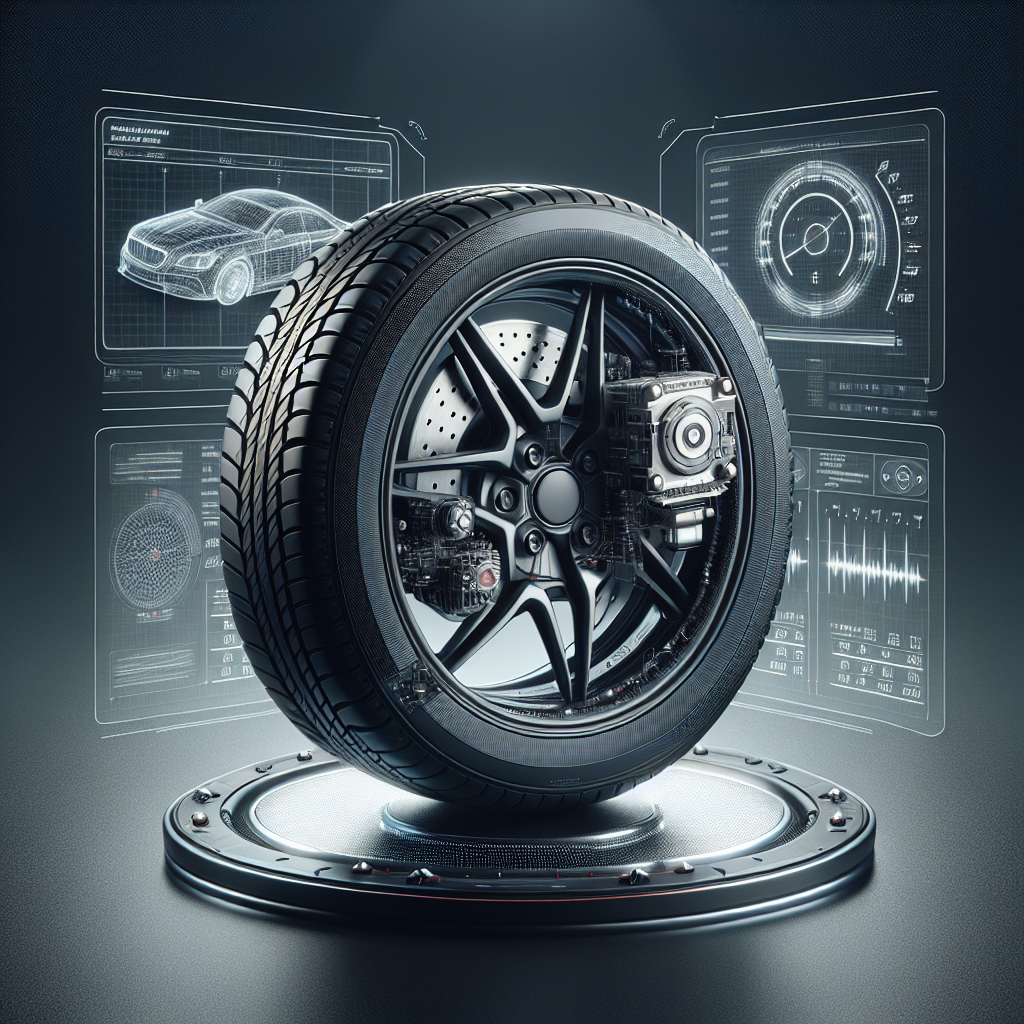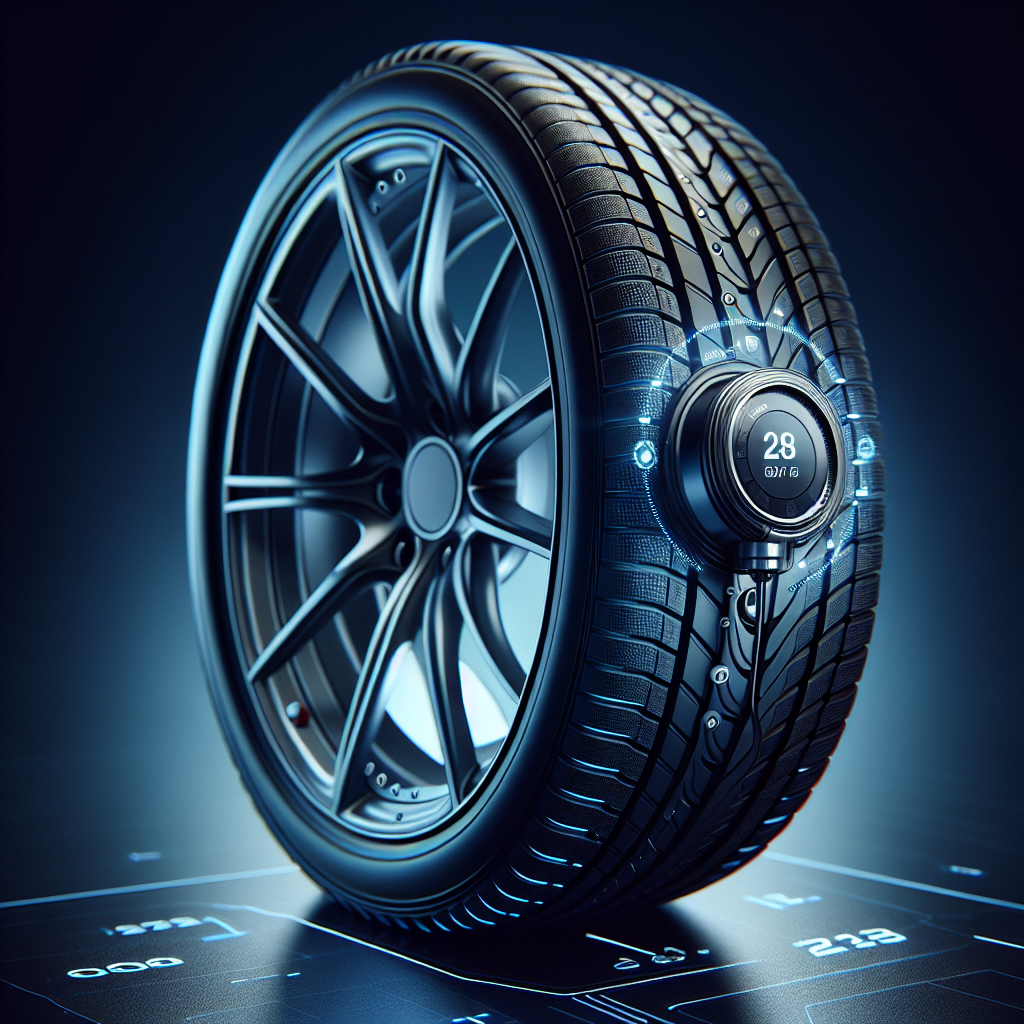Tire Pressure Monitoring Systems (TPMS) play a crucial role in ensuring the safety and performance of vehicles, including trailers. By actively monitoring tire pressure, these systems provide real-time data that is essential for both driver awareness and vehicle maintenance.
TPMS operates through two primary types: direct and indirect. In a direct TPMS, sensors located inside each tire measure the actual tire pressure and send this information to the vehicle’s onboard computer. This allows for precise readings and alerts when tire pressure falls below a safe threshold. On the other hand, an indirect TPMS utilizes the vehicle’s existing wheel speed sensors to estimate tire pressure based on changes in tire rotation. While indirect systems can be less accurate, they still serve a vital function in alerting drivers to potential issues.
Understanding how tire pressure monitoring system works is essential for maintaining optimal tire health. Proper tire pressure can lead to:
- Improved fuel efficiency
- Enhanced vehicle handling and safety
- Extended tire lifespan
With the integration of TPMS in trailers, operators can experience peace of mind, knowing that they are equipped with technology that actively safeguards against tire-related failures. To further enhance your trailer's safety, consider adopting a comprehensive monitoring system that includes axle temperature data and tire data.
Tow with peace of mind, knowing that TrailerWatchdog is standing guard. Visit trailerwatchdog.com for more information on how we can help you.
Components of a Tire Pressure Monitoring System

A Tire Pressure Monitoring System (TPMS) consists of several key components that work together to provide accurate tire pressure data and enhance vehicle safety. Understanding these components is essential for grasping how TPMS functions effectively.
1. Tire Pressure Sensors: These are the heart of the TPMS. Positioned inside each tire, these sensors continuously monitor the tire pressure and temperature. They send real-time data wirelessly to the vehicle’s central control unit, triggering alerts if the pressure drops below the recommended levels.
2. Control Module: The control module acts as the brain of the TPMS. It receives data from the tire pressure sensors and interprets this information. If a tire's pressure is too low or too high, the control module activates visual or auditory alerts to notify the driver.
3. Display Interface: This component is typically found on the vehicle’s dashboard. It displays real-time tire pressure readings and any warnings triggered by the TPMS. A user-friendly interface allows drivers to monitor tire health easily.
4. Power Source: Most TPMS sensors are equipped with small batteries that power them. Some systems may utilize a vehicle's power supply, while others rely on long-lasting batteries designed for extended use.
5. Communication Protocol: This component enables the wireless transmission of data between the tire sensors and the control module. Robust communication protocols ensure that the data transfer is reliable and timely, allowing for immediate responses to any tire pressure issues.
By understanding these components, vehicle owners can appreciate the intricate technology behind TPMS and its significant role in promoting road safety and performance.
How Tire Pressure Monitoring System Functions

The functionality of a Tire Pressure Monitoring System (TPMS) is pivotal in maintaining optimal tire performance and enhancing vehicle safety. Understanding how tire pressure monitoring system works provides insights into its importance on the road.
At the core of the TPMS is the continuous monitoring of tire pressure and temperature. Each tire is equipped with a sensor that collects this data and transmits it wirelessly to the vehicle's central control unit. Here’s how the process unfolds:
- Data Collection: The tire pressure sensors gather real-time data regarding the tire's pressure and temperature. This information is crucial as it can vary based on driving conditions and temperature fluctuations.
- Data Transmission: The collected data is sent wirelessly to the control module at regular intervals. This ensures that the vehicle's system is consistently updated with the latest tire conditions.
- Data Analysis: The control module analyzes the incoming data against pre-set thresholds for acceptable tire pressure. If the pressure falls below or exceeds these thresholds, the system recognizes a potential issue.
- Alert Activation: Upon identifying an abnormal condition, the control module activates alerts. This can manifest as visual warnings on the dashboard and auditory signals, prompting the driver to take necessary action.
- Driver Response: The alerts guide the driver to check tire pressure or seek professional assistance, thereby preventing potential tire blowouts and enhancing safety.
By maintaining consistent communication between the sensors and the control module, TPMS ensures that drivers are always aware of their tire's health. This proactive approach significantly reduces the risk of accidents caused by underinflated or overinflated tires, ultimately contributing to safer driving experiences.
Benefits of Using Tire Pressure Monitoring Systems

Implementing a Tire Pressure Monitoring System (TPMS) in your vehicle can yield numerous advantages, enhancing both safety and performance. Understanding the benefits of using tire pressure monitoring systems can help drivers appreciate their value and encourage greater adoption.
Here are some key benefits:
- Enhanced Safety: One of the primary advantages of a TPMS is the significant increase in safety it offers. By continuously monitoring tire pressure, it helps prevent blowouts and loss of vehicle control, thereby reducing the risk of accidents.
- Improved Fuel Efficiency: Properly inflated tires contribute to better fuel economy. A TPMS alerts drivers when tire pressure is low, ensuring tires remain at optimal levels, which can lead to lower fuel consumption and cost savings.
- Extended Tire Life: Maintaining the correct tire pressure helps extend the lifespan of tires. Consistent monitoring allows for timely interventions, preventing uneven wear and tear due to improper inflation.
- Real-time Data: TPMS provides real-time tire pressure and temperature data, enabling drivers to respond promptly to any issues. This immediate feedback promotes proactive vehicle maintenance.
- Compliance with Regulations: Many regions require vehicles to be equipped with a TPMS. Installing one ensures compliance with safety regulations and standards, avoiding potential fines and enhancing vehicle resale value.
By integrating a TPMS into your vehicle, drivers can enjoy these benefits while contributing to safer roads for everyone. The technology not only safeguards against unexpected tire issues but also promotes responsible driving habits.
Common Issues with Tire Pressure Monitoring Systems

While Tire Pressure Monitoring Systems (TPMS) offer numerous benefits, they can also present some challenges. Understanding the common issues with tire pressure monitoring systems can help users diagnose problems and maintain effective vehicle performance.
Here are some prevalent issues that can arise with TPMS:
- Sensor Malfunction: TPMS relies on sensors to monitor tire pressure. These sensors can fail due to battery depletion, physical damage, or environmental factors, leading to inaccurate readings or system failure.
- False Alerts: Sometimes, the system may trigger false alerts, causing unnecessary concern for drivers. This can happen due to temperature changes, which affect tire pressure, or due to sensor calibration issues.
- Incompatibility with Tires: Not all tires are compatible with every TPMS. Using aftermarket tires without integrated sensors can lead to functionality problems and can result in misleading pressure readings.
- Improper Installation: If a TPMS is not installed correctly, it can lead to a range of issues, including failure to monitor tire pressure accurately. It is crucial to have systems installed by professionals to ensure proper functionality.
- Calibration Issues: After replacing tires or sensors, TPMS may require recalibration. Failure to do so can result in incorrect readings, making it essential to follow manufacturer guidelines after any changes.
By being aware of these common issues, drivers can take proactive steps to ensure their TPMS operates effectively. Regular maintenance and timely interventions can help mitigate these problems, ensuring a safer driving experience.
Future Trends in Tire Pressure Monitoring Technology
The future trends in tire pressure monitoring technology are shaping the way we approach vehicle safety and efficiency. As the automotive industry evolves, so do the technologies designed to enhance the performance of our vehicles. Here are some anticipated advancements:
- Integration with IoT: The Internet of Things (IoT) is set to revolutionize TPMS by enabling real-time data sharing between tires and the vehicle's onboard systems. This integration will allow for more refined data analytics and predictive maintenance.
- Advanced Sensor Technology: Future TPMS will likely utilize more sophisticated sensors that provide not just tire pressure data, but also temperature readings, tread depth analysis, and overall tire health diagnostics.
- Wireless Communication: Innovations in wireless technology will enhance the communication between tire sensors and the vehicle’s dashboard. This will improve reliability and reduce maintenance concerns associated with wired systems.
- Mobile App Integration: Expect to see TPMS connected with mobile applications that provide drivers with instant alerts, allowing them to monitor tire conditions on the go and receive maintenance reminders.
- Predictive Analytics: Leveraging big data and machine learning, future systems may predict tire failures before they occur, enabling preventative measures and enhancing safety.
As we look ahead, these advancements promise to make tire pressure monitoring systems even more effective in promoting safety and performance. Tow with peace of mind, knowing that trailerwatchdog is standing guard. Visit trailerwatchdog.com to learn more about how our innovative solutions can transform your trailer into a smart trailer.








